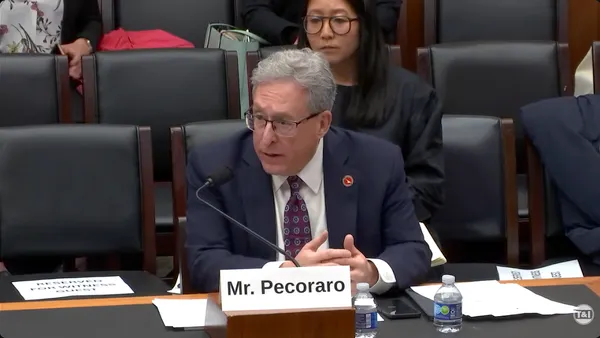Dive Brief:
-
The U.S. Supreme Court on Thursday issued a unanimous decision to allow an excessive force lawsuit against a Harris County, Texas, police officer to proceed, sending the case back to lower courts.
- The court rejected the “moment of threat” doctrine, which evaluates excessive use of force solely on the circumstances at the moment an officer takes action, in favor of an approach that considers the totality of circumstances: events before, during and after the force.
-
Law enforcement advocates say the decision could affect how courts review use-of-force incidents, but “for your day-to-day cop, I don’t think this changes anything,” National Police Association spokesperson Betsy Brantner Smith said.
Dive Insight:
The case “is a reminder that law enforcement use of force is constantly under scrutiny,” Smith said, adding that inconsistent court rulings regarding use of force “make it very difficult for your basic boots-on-the-ground cop.” NPA has proposed a bill that would provide federal protections to officers who use “justified” force when facing a credible threat.
The Cato Institute, Law Enforcement Action Partnership and Center for Policing Equity argued in an amicus brief filed for Barnes v. Felix in June that the Fourth Amendment prohibits officers from killing someone “just for fleeing from being arrested for petty charges” and stated “the Supreme Court could promote better, safer policing by confirming that no one is above the law.”
The Supreme Court decision is related to actions taken April 28, 2016. Police officer Roberto Felix pulled over a vehicle for suspected toll violations and ordered driver Ashtian Barnes to exit the vehicle. Barnes began to drive away with the driver’s door open, and Felix jumped onto the car’s doorsill and fired two shots inside, killing Barnes. Barnes’ mother sued on her son’s behalf, alleging the officer violated Barnes’ Fourth Amendment right against the use of excessive force.
The Fifth District Court, which covers Louisiana, Mississippi and Texas, ruled that analysis of deadly force cases was limited to the moment of threat, and Felix “could reasonably think himself ‘at risk of serious harm” while standing on the doorsill of the moving vehicle. This use of the “moment of threat” doctrine “clashed with the Sixth and Seventh Circuits’ approach, which examines all circumstances” leading up to the use of deadly force, Thomas Spyker, a partner with Columbus, Ohio, law firm Reminger, wrote in a blog post. “The Supreme Court took the case to resolve this split,” he wrote. Its decision in Barnes v. Felix is now the national standard, Spyker wrote.
“Every year, Black people are killed by law enforcement officers and face immense hurdles to obtain justice,” Kevin Jason, deputy director of strategic initiatives at the Legal Defense Fund, said in a statement. “There can be no justice when courts are forced to ignore the actions of an officer that may have had a role in harming or killing a person.”
Jason said the Supreme Court decision “dismantles a dangerous legal framework and is an important step toward advancing police accountability.











